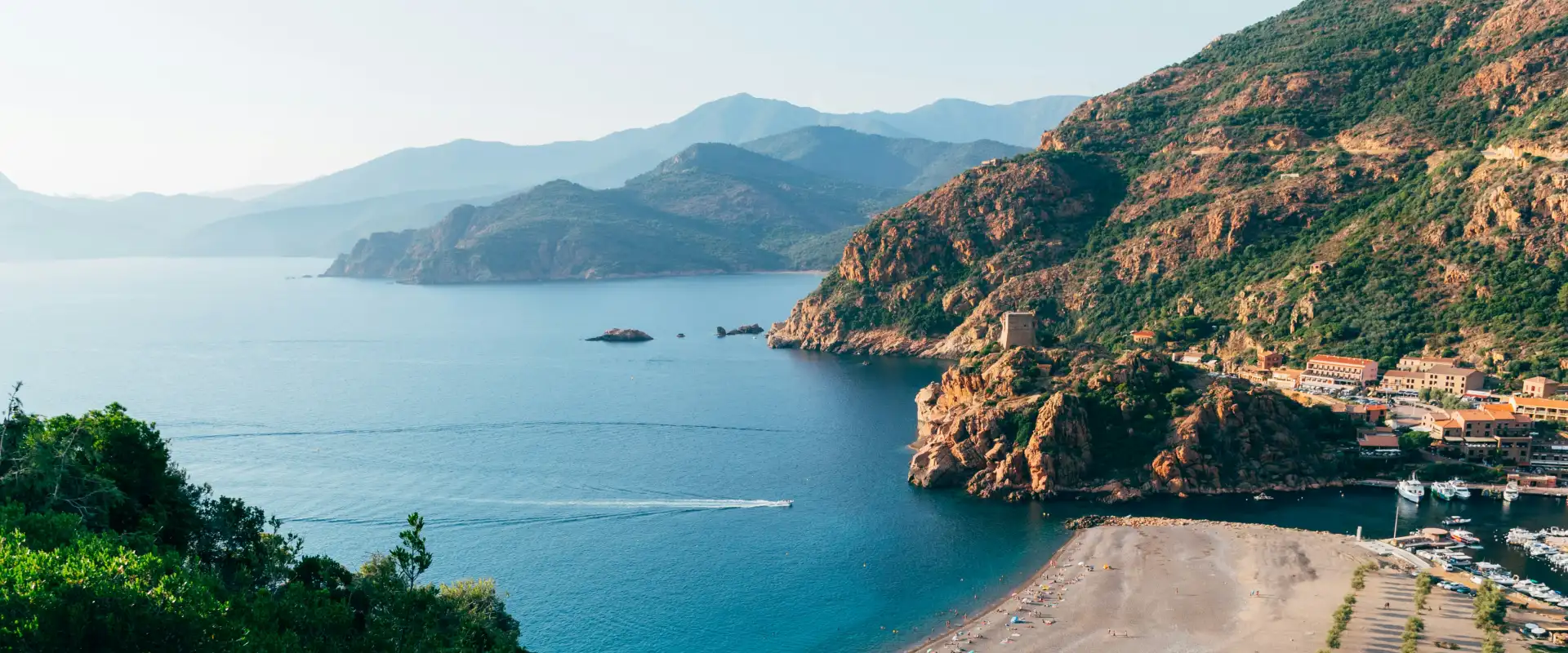
How to Be a More Responsible Traveler
Table of Contents
Being a responsible traveler isn’t just about being environmentally friendly (although that’s a big part of it, too). Our actions—from the way we treat locals to how we interact with nature—can have a huge impact on the destinations we visit.
The good news: it isn't hard to be a responsible traveler. In fact, you probably already do a lot of these items at home. These tips for being a more responsible traveler will go a long way in ensuring that the destinations we love so much stay beautiful and open to visitors.
1. Be aware of child welfare issues.
It’s really, really hard to turn away from a child’s suffering or say “no” to a child begging in the streets.
Unfortunately, according to Audrey Scott and Daniel Noll of Uncornered Market, you may be doing more harm than good if you hand over your cash.
"Travelers usually care about and want the best for the local children they meet on their trips. However, sometimes the actions we think are ‘helping’ may actually have unintended negative consequences for those same children. For example, lots of ‘ordinary’ situations and encounters with local children—like school visits, giving money to a child who is begging, buying from a child vendor, or photographing local children—can actually do harm or disrupt education.”
Giving children money encourages their parents to keep them out of school, and research has shown that visiting orphanages actually increases demand for more orphans (meaning some orphans actually have a living parent). Orphanages can be profitable businesses. “That's why it's important for travelers to become more aware of the complex issue of child welfare to ensure that their actions support children and families,” says Audrey.
If you want to know more about how child welfare in tourism, Uncornered Market has an in-depth blog post on the topic.
2. Make sure your volunteer program is actually helping.
Volunteering while traveling can be an incredibly meaningful and rewarding experience; however, not all volunteer opportunities are created equal.
“Realistically assessing your own qualifications for the volunteer work you seek is an important first step. Do you have the right skills and enough time to meaningfully contribute to the issue your volunteer work will address? Ethical volunteer programs start with only allowing qualified volunteers, not anyone with a hankering to do good in any given location,” says Shannon O’Donnell who runs the site Grassroots Volunteering.
“My go-to initial check for a project is what I call the "two Ds"—dignity and dependence,” she explains. “Does your project allow locals to maintain dignity in the interactions? It really depends on the type of volunteering you’re engaged in and how the program is structured to ensure the interactions respectfully engage the local community. And dependency is also a varied answer because every volunteer project has a different timeline. Perhaps it's completely appropriate to consider reforestation projects on a 20-year timeline before locals should be trained and managing the project, but the idea is: there's an out planned for the project. In too many cases volunteer projects are designed to perpetuate more opportunities for paid volunteering.”
When vetting volunteer opportunities ask yourself if your skill set actually match the work you’re doing. Are the locals involved in this volunteer project, or are you just lining someone else’s pockets with your hard-earned money? You can also check out a comprehensive list of ethical volunteer opportunities like this one on Grassroots Volunteering.
3. Respect nature and leave no trace.
It should go without saying, but don’t litter; take care of your surroundings. And, if there are no-go zones in a national park or other natural space, or if you’re urged to stay on the marked trail, follow those rules. You could be wandering into dangerous territory, or destroying delicate flora and fauna underfoot like Russian Instagrammer Alexander Tikhomirov did we he went off-roading in Iceland—something that is strictly prohibited in the country—and ended up with a hefty fine and a lifelong ban from the country.
“Respecting the rules of National Parks seems like it should be a no-brainer,” says Bret Love of Green Global Travel, “but it's remarkable how many people clearly do not understand how to travel responsibly in nature. From getting too close to wildlife for selfies and wandering off clearly-marked trails to tagging rocks with graffiti, our national and international landmarks are clearly endangered by overtourism. The answer is simple: Follow the ‘Leave No Trace’ ethos, stay on the trail, give wild animals adequate space, and treat Mother Nature as if she were a frail grandmother worthy of respect and admiration. And don't be a jerk.”
For more tips from Bret, see Green Global Travel’s guide on How to Travel Responsibly to National Parks.

4. Follow the rules and remember that you’re a guest.
Respect the rules and laws of the place you’re visiting. Even if you don’t understand why certain rules are in place, or if the activity is legal in your country.
The rules don’t just apply to national parks. If you’re told to stay off sacred land in places like Hawaii, stay off that land. Don’t camp on private property. Don’t engage in illegal drugs. Practice common sense and be respectful of the rules and customs of the place you’re visiting.
Remember, when you’re traveling, you’re the foreigner. Your ideas and values may be drastically different from the people or places you’re visiting, and it’s vital to keep an open mind. You’re experiencing someone else’s culture, and that’s really what makes traveling so beautiful.
“We see the world through our own window, our own set of assumptions, ideas about reality, biases, etc. There’s nothing wrong with this—it’s just about recognizing that your truth is your truth and may not be the truth.” - Mariellen Ward, breathedreamgo
5. Show respect at places of significance.
Being respectful at places of historical significance is an importance that can’t be overstated, especially at memorials or in places where tragedy has occurred.
You might have seen recent headlines about some Instagrammers taking sexy selfies at Chernobyl, the site of a nuclear disaster in Ukraine in 1986. There’s no other way to say it: it’s tactless, rude, and completely shameful. Respecting the lives lost is far more important than a selfie.
Candice Walsh, a blogger at Free Candie, recalls seeing a woman taking photographs in a no photography zone at Auschwitz, the concentration camp where over a million Jews were murdered. “The tour guide had explicitly explained that photography was prohibited due to respect for the victims, and not five minutes later I turned around and saw a woman taking photos of a display case full of human hair. It was appalling.”
6. Don’t feed or harass the wildlife.
Remember, wild animals are wild—they’re unpredictable, and they will certainly react if they feel threatened. Getting too close is dangerous. Furthermore, any animal that gets too comfortable with people is considered a threat to public safety. Wildlife officials will be forced to kill the animal.
“One of the biggest ways we can all respect nature while traveling is by not feeding or getting too close to wildlife. I visit a lot of outdoor destinations and National Parks, and I always see people trying to get as close as possible to the animals to get that ‘perfect shot.’ This is not only dangerous to you, but it can be extremely dangerous or even lethal to the animal. If you know you’ll be visiting a cool outdoor location and you want some great animal shots, buy or rent a zoom lens and keep a safe distance! Nobody wants to witness a stressed out bison or a protective grizzly.” - Joy Sheehan, A Jaunt With Joy
7. Choose your wildlife tourism experiences carefully.
We all know someone who has photos of themselves perched atop an elephant or snuggling a tiger in Thailand. Heck, you might have one of those photos—only recently has there been widespread education about why riding elephants is problematic, and many people still don’t realize that those tigers spend most of their lives heavily drugged.
In most cases, with any experience that brings you up close to a normally wild animal—riding an elephant, petting a tiger, swimming with dolphins—the quality of the animal’s life has been compromised in order for you to have that experience.
Elephants, for example, must go through incredible trauma in order to be ridden. The animals are often tortured and separated from other elephants. Additionally, elephants aren’t built like horses; riding them is physically harmful to the elephant’s spine. Even places that don’t offer riding and bill themselves as sanctuaries often don’t have the animals’ best interest in mind.
“It's getting more difficult to find ethical elephant reserves these days,” says Diana Edelman, the owner of Vegans, Baby, who worked for years alongside an elephant conservationist in Thailand and has witnessed the horrors firsthand. “Sanctuaries are a big trend and many—if not most—of the places which say they are sanctuaries are actually not. Sanctuaries are places animals live without harm, without interference. At most reserves, these elephants are still made to work for humans, albeit not giving rides. They are put on display, fed and bathed for humans entertainment, not because they want to do either with humans. The truth is, they don't. These animals don't need or want to be around people.”
Aside from harm to the animal, these wildlife experience can also risk harm to the traveler. “You've got to remember that elephants—all of them that have been in the tourist industry—have gone through the crush,” says Diana, referring to the brutal way an elephant is “broken” to interact with humans. “They can act out at any time and can seriously hurt, or even kill, a human. You want to support places that simply let you observe these magnificent creatures without imparting your desires on them. Watch them. That's it. An ethical elephant reserve won't allow you to get up close to them and take selfies, they won't have you interact with them. They won't use any means to control them. They won't chain them. Simply, you get to watch them enjoy their lives now that they're free from work.”

8. Buy locally made souvenirs.
It’s easy to pick up cheap, readily available souvenirs when you’re traveling, but this usually isn’t the most ethical way to shop. In fact, many of those souvenirs are made in foreign places and shipped to your destination (i.e., that little sombrero figurine in Mexico actually came from China).
If you want to truly support the local economy, seek out the local artisans and fair-trade shops. Buy directly from the creators. You’ll pay more, but you’ll be supporting local people and communities; plus you’ll have an authentic piece to bring home with you.
9. Travel off-season to avoid overtourism.
It’s no secret that cities like Barcelona and Venice are struggling to meet the demands of booming tourism. Locals suffer the most: they deal with inflated property prices, insufferable crowds interrupting their day-to-day routines, and general lack of respect from people who aren’t being responsible travelers (rowdy party people, for example).
Consider going somewhere more off the beaten path (maybe Cardiff instead of London? Or Tonga instead of Hawaii?). But if you must visit one of those tourism hotspots (who doesn’t love wandering the narrow alleyways of Barcelona’s Gothic Quarter?), consider going during the off-season.
"Don’t let less-than-perfect weather put you off,” says Alyse from The Invisible Tourist. “By traveling during the off-season, you’re not only able to provide locals with tourism money at times when they actually need it, you’ll also be able to save a little money for yourself as hotels and flights cost less. Crowds are much smaller during these times, too. It’s a win-win!"
10. Choose eco-friendly accommodations.
Just because a hotel touts itself as eco-friendly doesn’t necessarily mean it’s eco-friendly.
You’ll have to do a little of your own research, but keep an eye out for things like whether or not the accommodation has been constructed with sustainable materials, or if they use regional food in their restaurant kitchens. What are they doing to reduce environmental impact? Are they practicing water conservation by using low flow toilets and showers? Are they using bulk shampoo and shower products rather than individually sized packaging?
There’s no such thing as a 100% eco-friendly accommodation, but certainly, some are more eco-friendly than others.
11. Practice your eco-friendly lifestyle abroad.
When we’re traveling or on vacation, it’s easy to forget about all those little extra measures we take daily to cut down on waste, but Joy Sheehan of A Jaunt With Joy recommends practicing the same low-waste lifestyle abroad. “Pack your canvas tote and stainless steel straw in your suitcase so that you’re prepared to deny plastic while you’re traveling and eating out,” she says.
Analyze your packing list. Even things like a water bottle with a filter will help cut down on having to purchase bottled water on the road. It might be pricey up front, but you’ll save in the long run.
12. Use environmentally-friendly sunscreen.
Sunscreen is always encouraged, but if you’re planning on time in the ocean, make sure your sunscreen isn’t damaging the environment while protecting your skin. Sunscreen chemicals like oxybenzone and octinoxate are actually pollutants and can cause a lot of damage to coral reefs.
How to know which sunscreen is reef-friendly? Easy. Just check the label. If there are no ingredients like oxybenzone and octinoxate, you’re good to go. Sunscreen that calls itself reef-friendly or environmentally-friendly doesn’t necessarily make it so. You’ll have to read ingredients for yourself.
13. Reduce your carbon footprint.
Unfortunately, air travel is a large contributor to carbon emissions; however, the additional carbon produced from someone buying a cheap flight is negligible in comparison to business class (which generates more revenue and thus factors more heavily into the number of flights operating) and especially when compared to the output of private jets.
We’d never suggest you stop flying as a means of exploring the world the world—who has time for a lengthy sea voyage or multi-day road or rail trip every time they want to take a vacation?—but when shorter distances make it possibility, consider taking a bus or train (Rome2rio is a great resource for comparing options and you can read our guide to Europe train travel here). Slower travel can also help cut down emissions; one you’re in the region you want to visit, spend more time in fewer places rather than hopping from city to city.
Want to see the world? Join Going and get amazing flight deals—with a savings of $550 on average—sent right to your inbox.
Last updated December 21, 2023









